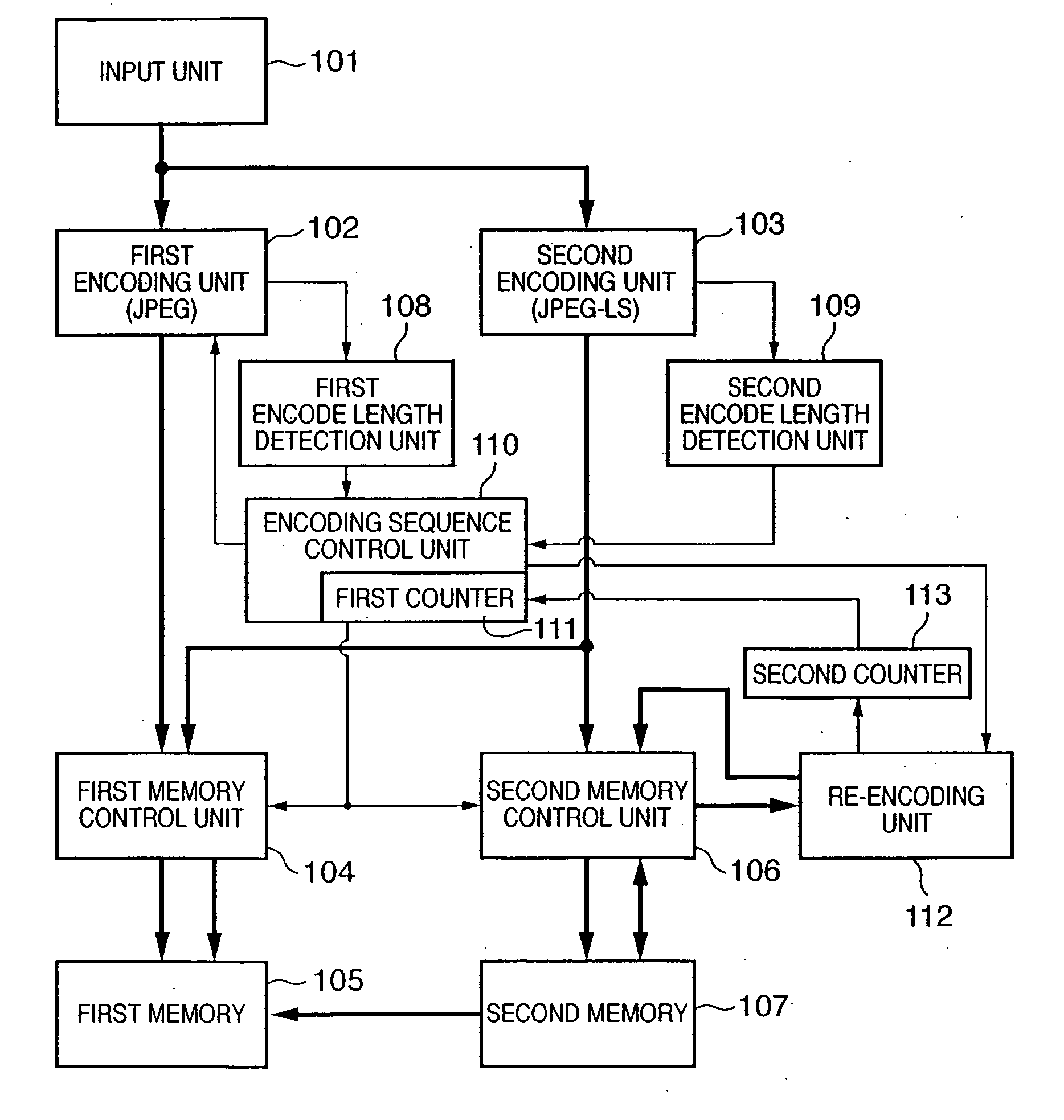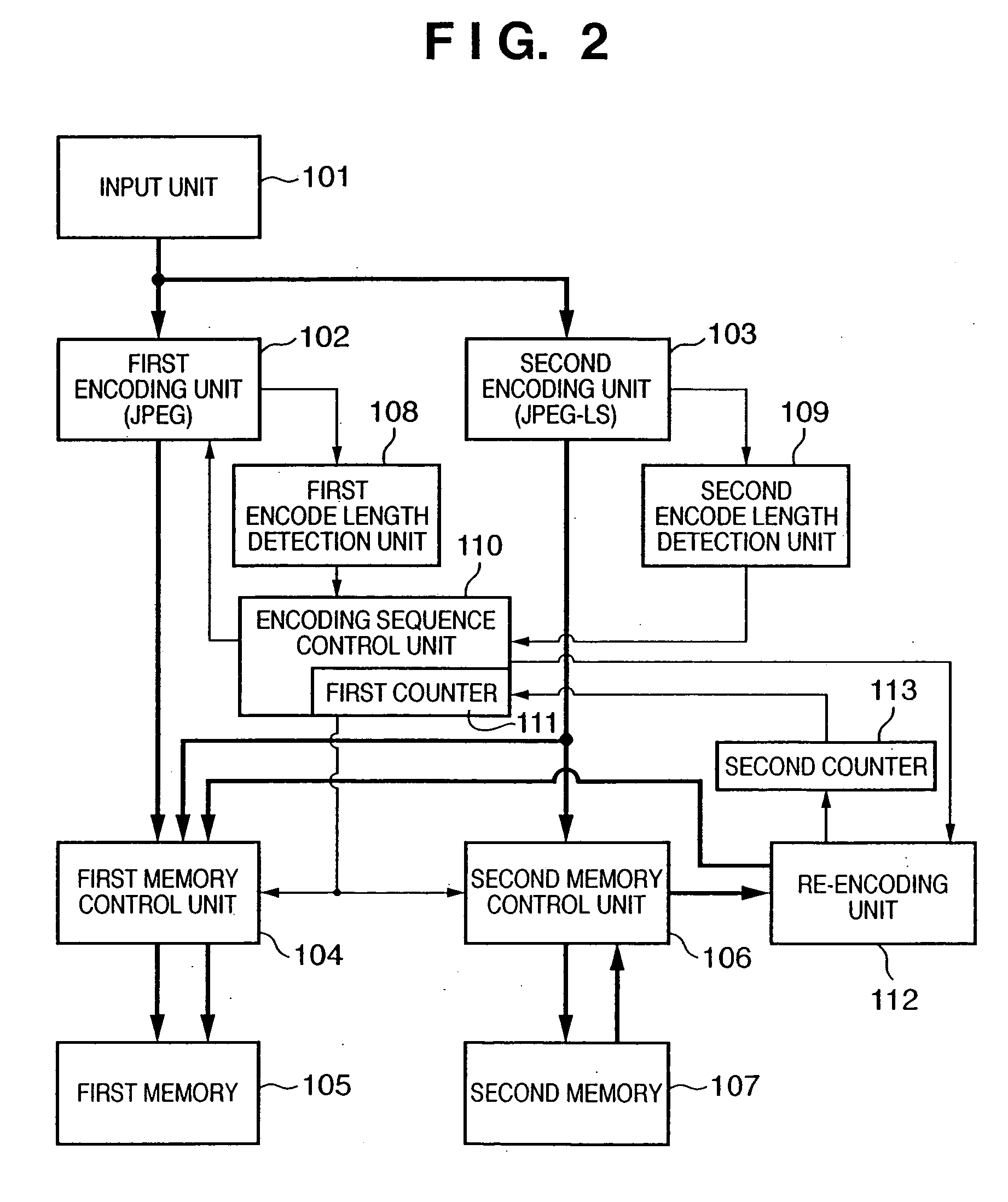Image encoding apparatus and method, computer program, and computer-readable storage medium
a technology of image data and encoding apparatus, applied in the field of encoding image data, can solve the problems of poor efficiency, memory overflow, and difficulty in making the encoded data of one image (document) fall within the target code amount without prescan,
- Summary
- Abstract
- Description
- Claims
- Application Information
AI Technical Summary
Benefits of technology
Problems solved by technology
Method used
Image
Examples
first embodiment
[0057]FIG. 1 is a block diagram showing an encoding unit 6 according to the first embodiment. Each unit in FIG. 1 will be briefly explained.
[0058] An input unit 101 incorporates a line buffer memory for a plurality of lines. As described above, the input unit 101 receives image data from a document reading unit 3 or rendering unit 4 via a selector 5 in the raster order, stores the image data in the internal line buffer, and outputs it by a block of N x M pixels (in the first embodiment, a block of 8×8 pixels).
[0059] A first encoding unit 102 is a lossy encoding unit which compression-encodes each pixel block input from the input unit 101 in accordance with a parameter which influences the compression ratio, and outputs the result (encoded data). An identification bit representing that data has been encoded by the first encoding unit 102 is added at the start of the encoded data.
[0060] The first encoding unit 102 according to the first embodiment adopts JPEG encoding (lossy encodi...
second embodiment
[0139] In the first embodiment described above, the first counter is temporarily cleared to 0 when the encoded data amount (value of the first counter 111) exceeds a target value during input of a 1-page image. The first counter 111 holds an accurate total code amount again after re-encoding by the re-encoding unit 112 is completed. That is, the encoded data amount becomes temporarily unknown at an interval between timings T1 and T2 and an interval between timings T3 and T4 in FIG. 13. When input of a document image ends at timing T5, but the total code amount accidentally exceeds the target value immediately before timing T5, no next document image can be input until re-encoding by the re-encoding unit 112 is completed.
[0140] The second embodiment solves the above problem. The arrangement of an encoding unit 6 according to the second embodiment is shown in FIG. 14.
[0141] The arrangement in FIG. 14 is different from that in FIG. 1 in that the encoding unit 6 adopts a third encodin...
PUM
 Login to View More
Login to View More Abstract
Description
Claims
Application Information
 Login to View More
Login to View More - R&D
- Intellectual Property
- Life Sciences
- Materials
- Tech Scout
- Unparalleled Data Quality
- Higher Quality Content
- 60% Fewer Hallucinations
Browse by: Latest US Patents, China's latest patents, Technical Efficacy Thesaurus, Application Domain, Technology Topic, Popular Technical Reports.
© 2025 PatSnap. All rights reserved.Legal|Privacy policy|Modern Slavery Act Transparency Statement|Sitemap|About US| Contact US: help@patsnap.com



